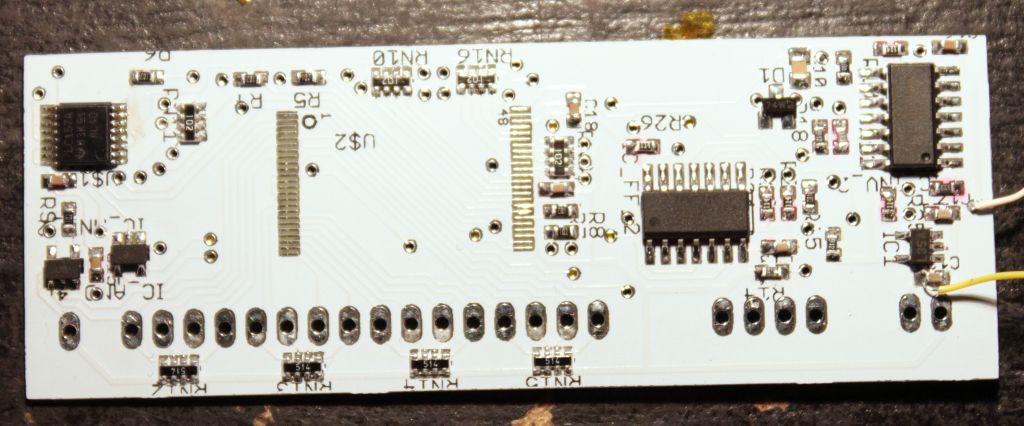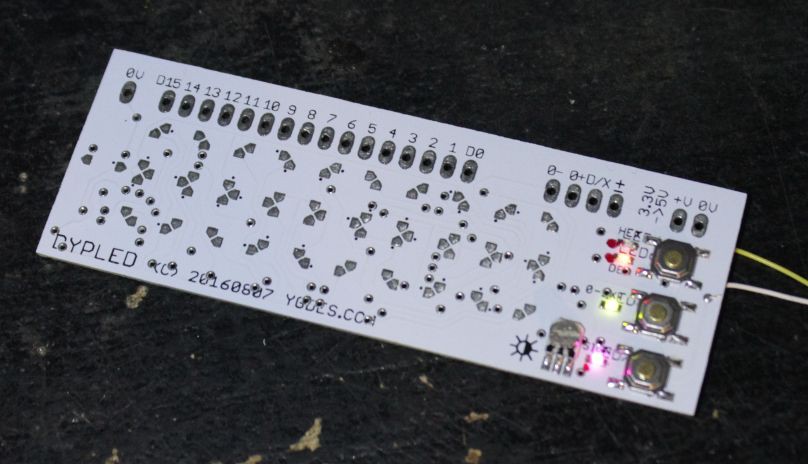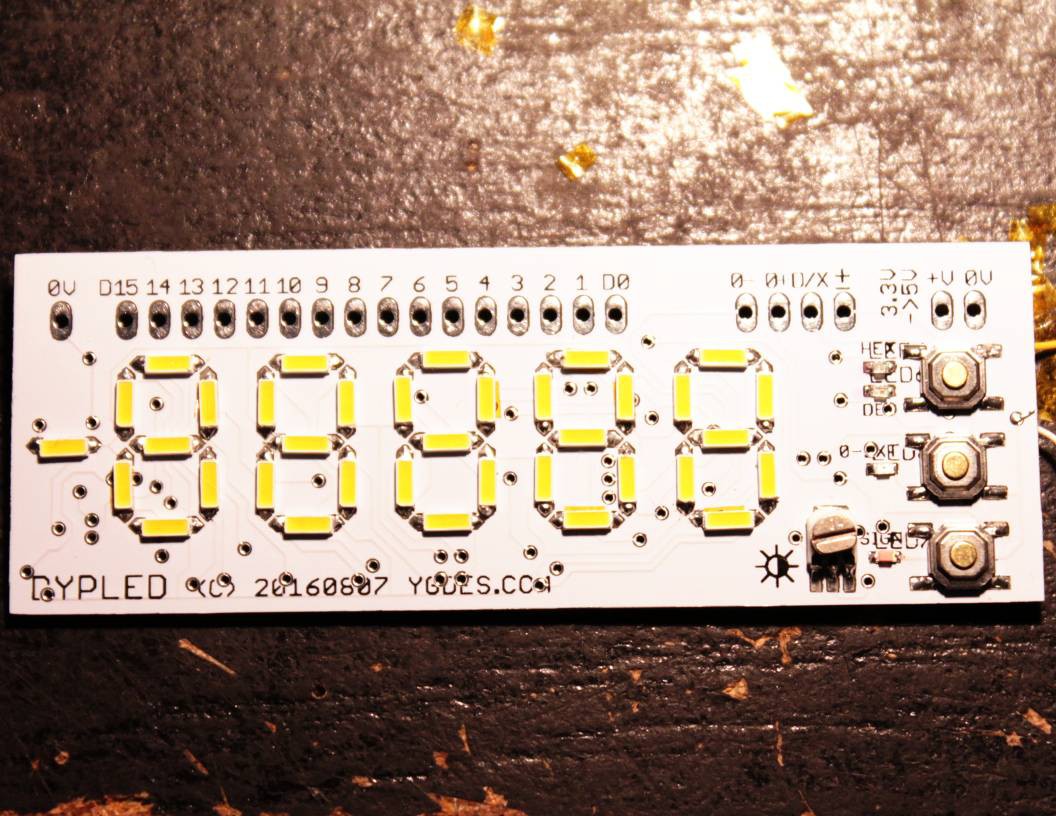Today I decided that the first PCB was good enough to try to solder it. I know I have to order new PCBs but I want to be sure that I removed all the blunders...
I started from the power supply, populated the analog parts then the ICs. This allowed me to locate a short between two pins of the '157 which drew about 50mA...
Without the digital parts of the left, the circuit draws less than 200µA. This increases to almost 2mA with the status LEDs on. In particular the green LED draws about 1.2mA and is not very bright, I must change it... I suppose a recent µC could draw less than the discrete gates but at least it's reasonable and quite convenient :-)
The oscillator (100K and 2.2nF) runs at about 4900Hz and the 74HC74 brings it down to 2450Hz : no flicker is expected.
The circuit still works rather well under the 3V level. Some parameters change (frequency, brightness) but not significantly.
I also tested the front panel interface:
The LED's footrints are too tiny... I added some more soldering surface on the new version (booooh ugly, I should have modified the footprint instead... I'm lazy)
The push-buttons are not insulated and there are interference by mere touching. But it works.
The PWM adjustment works well, according to the ocilloscope :-)
The LED's brightness is important. I've put 10K series resistors to reduce the emitted light but the green is under-efficient, I'll swap it with a true green or white LED...
I also soldered all the parts of the user-facing side and the result is great (I'vewalready covered the problems in the previous log).
Since the Flash chip is not yet soldered, I can individually test the LEDs.
I changed the green LED with warm white. The luminosity is still too high with 10K in series. Trying with 30K.
Note 1: Apparently, it's better to use blue-based LEDs (white, pink) rather than older generations, for better efficiency.
Note 2: 0-extension is controlled by the 74HC74 and resets to set. OTOH the 74HC04 seems to keep the last value across short power outages. Good to know... Ideally, 0-ext should be off, right ? I'm going to update the schematics...
As expected, the board is crazy thin : 3.5mm from the top of the adjustable resistor, to the top of the SOP16 parts.
I don't know how to reduce the height of the resistor, thinner versions will be very hard to handle easily. It's not critical at this point.
The buttons are ultra-thin as well. They are not electrically insulated. Thicker versions (with some plastic enclosure) would solve this problem.
 Yann Guidon / YGDES
Yann Guidon / YGDES



Discussions
Become a Hackaday.io Member
Create an account to leave a comment. Already have an account? Log In.
These are 0603 and there is no need for ultra-miniaturisation...
No need for 1206 either, I just wanted to make a tiny color dot and that's fine.
The footprint however is adapted to reflow, not hand soldering.
Are you sure? yes | no
Nice.
But the LED footprints are quite big compared to 0402 ones.
Are you sure? yes | no
Are you refering to the 4014 or 0603 LEDs ?
Are you sure? yes | no
4014
Are you sure? yes | no